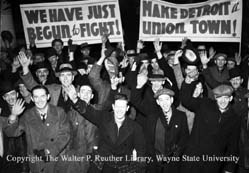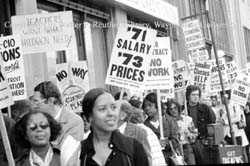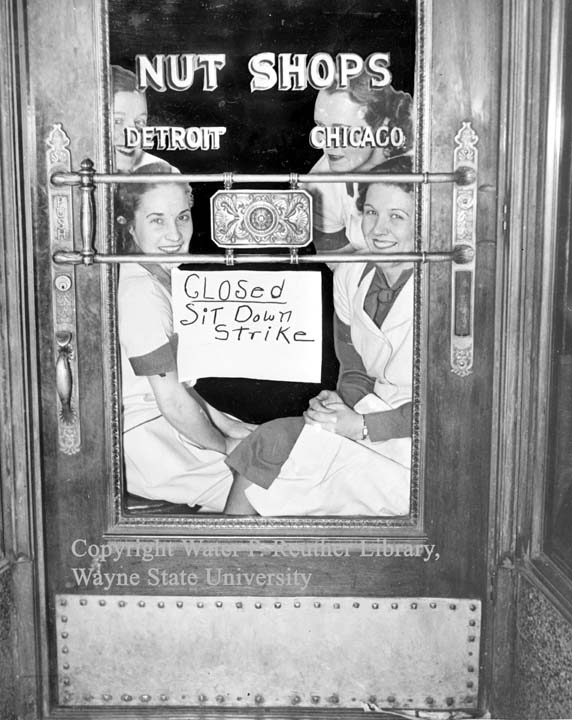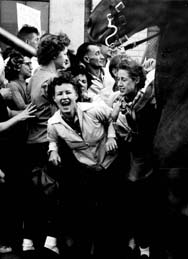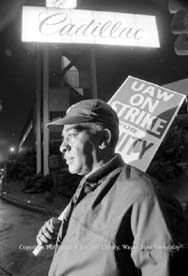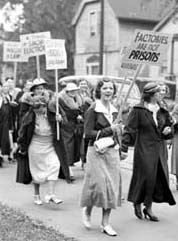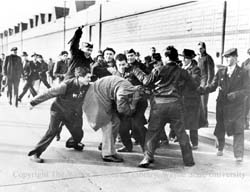 “The Picket Line”, April 3, 1941.
|
As America fully blossomed into an industrial nation, the organization of the workers soon followed. Unmonitored working conditions, limitless working hours, child labor, and wage discrimination based on race and sex went unchecked until the intervention of organized labor. Through years of struggle, the unions standardize issues such as the 8-hour workday, sick-days, medical benefits, anti-discrimination laws, and made a significant difference in the quality of life for workers. Detroit, as one of the great industrial cities, was an ideal place for union organizers. Though the city had a number of early unions, they lacked the strength and numbers to wield much influence. Detroit was considered an” open shop” city, meaning non-organized, until the late 1930s. In 1937, a number of different unions, notably the United Auto Workers, began an aggressive organizing campaign. Over the next 30 years, the strength and influence of the unions continued to grow. Detroit fast became a union stronghold. Its labor movement produced influential leaders such as Walter Reuther and James Hoffa, as well as legions of devoted union-represented workers. Strength often lies in numbers, and the hard economic times of the 1970s and 1980s weakened organized labor’s influence. Despite this, the history of the great unions, and their legacies remain a vital part of Detroit’s identity. |
||

